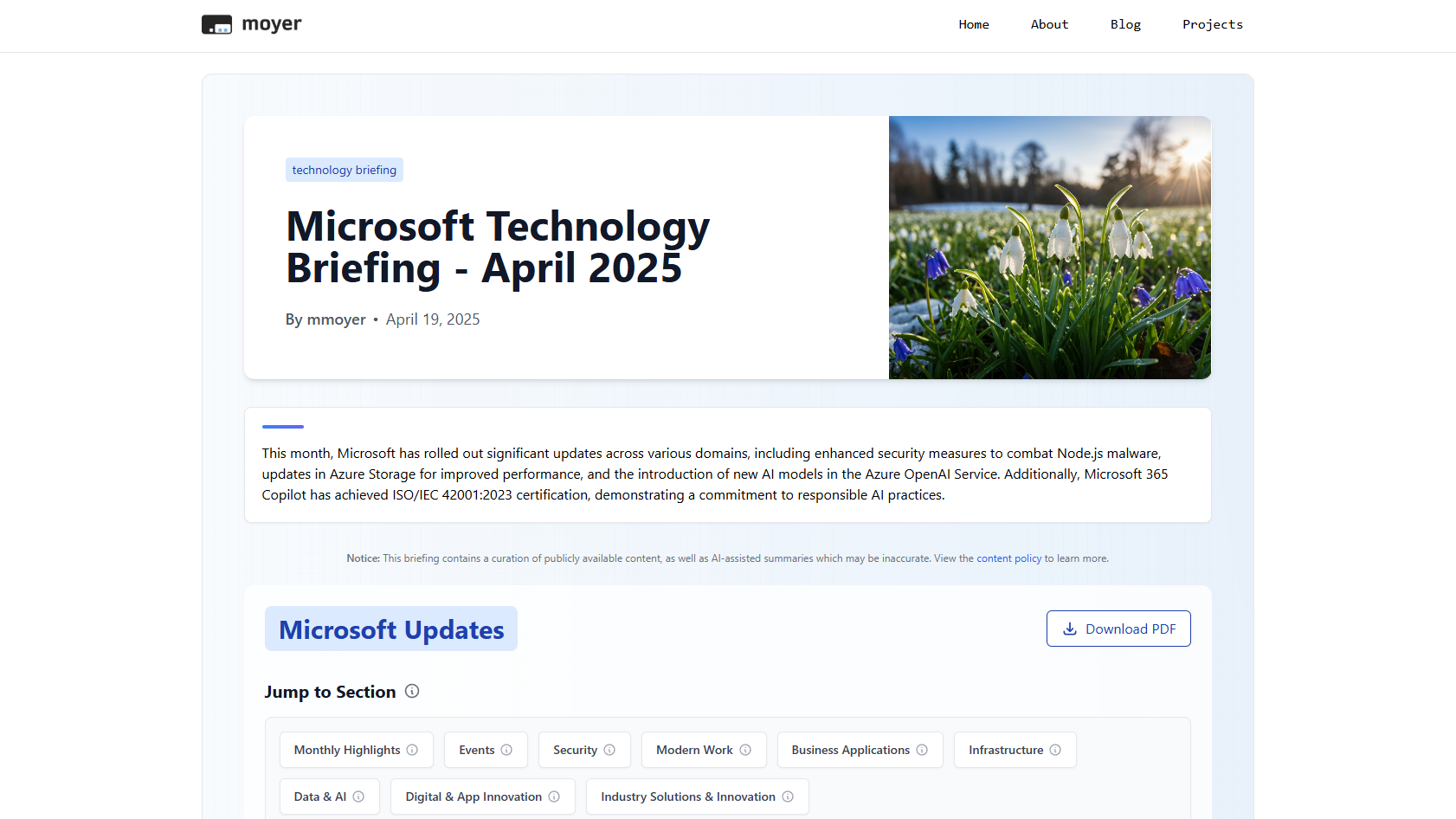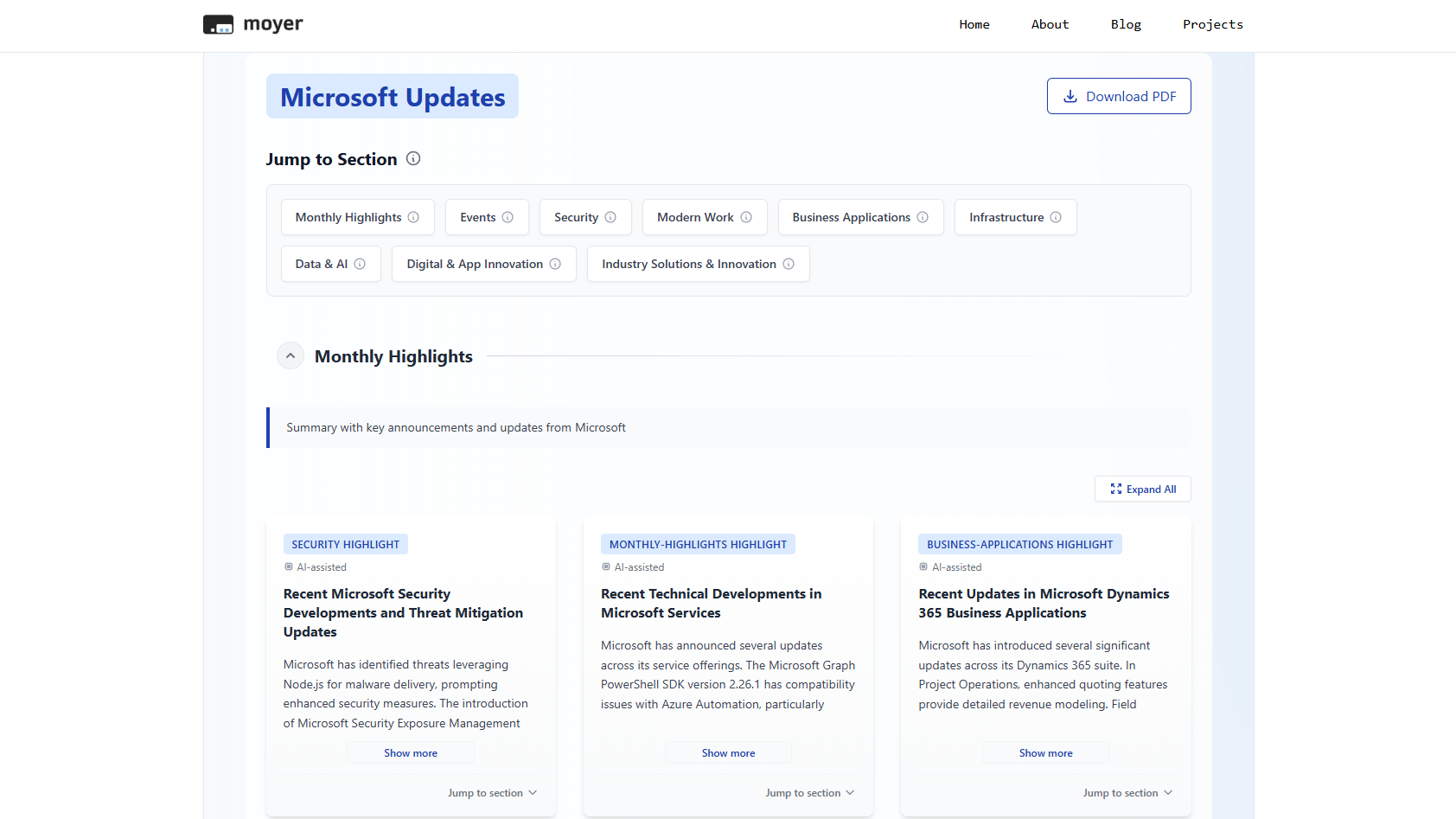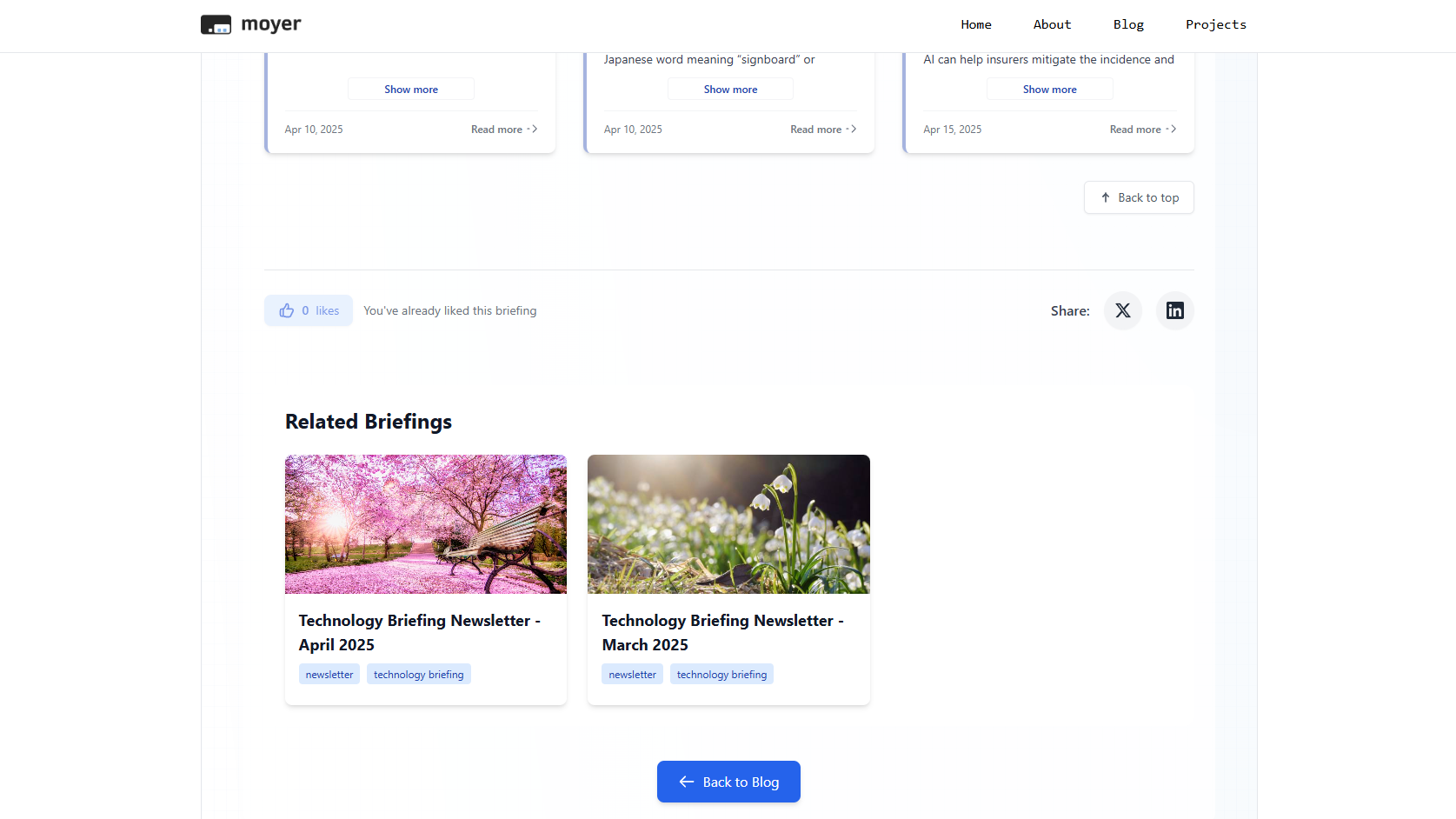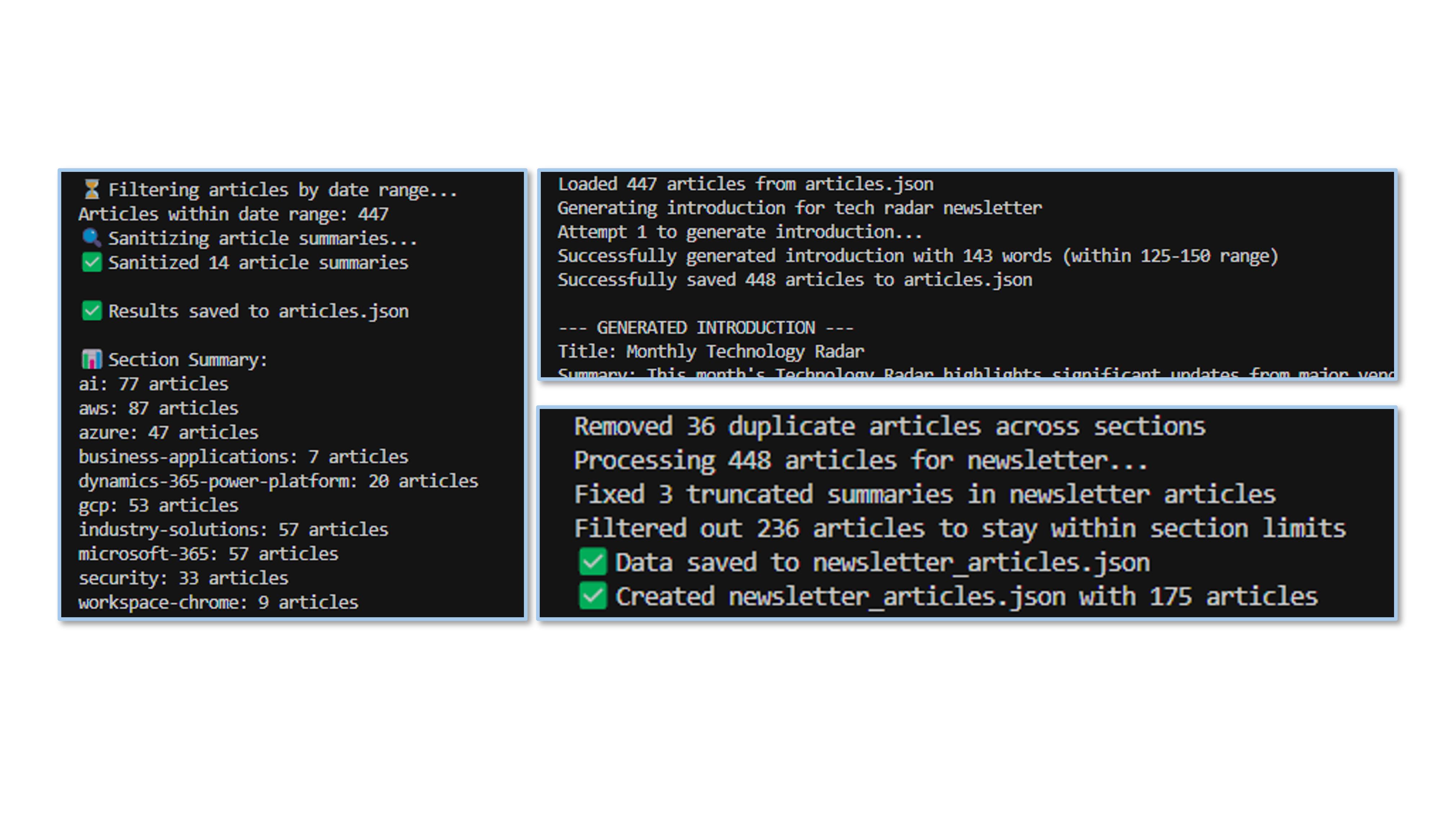Tech Briefing & Radar Builder
What It Is
A collection of tools, that powers two distinct outputs for gathering and presenting technology updates: Microsoft Technology Briefings – focused monthly briefing extracting the latest from Microsoft blogs and event listings through their RSS feeds, and Tech Radar Digests – broader, cross‑vendor reports that pull in curated updates from multiple technology providers using their RSS feeds (currently for Microsoft, AWS, Google Cloud, OpenAI, Salesforce and SAP with more to come).
Both formats publish as responsive blog posts on my website and the Microsoft Technology Briefings can also be downloaded as PDFs.
Why I Built It
Cloud technology evolves at a relentless pace, with important updates scattered across a maze of vendor blogs and feeds. Manually keeping up with this information – especially across multiple providers – is both time-consuming and inefficient. I built this system to eliminate that friction by automating the collection and organization of technology news and updates. The result is a single, user-friendly source that offers a clear, high-level overview of the latest developments, while also linking back to original sources for deeper exploration.
This approach delivers accurate, timely insights and reliably saves hours of manual research every week.
How It Works
Data Collection: Custom-built Python handlers fetches content from selected vendor RSS feeds, storing basic article metadata in a JSON schema.
Data Processing & Filtering: Articles are filtered by date and deduplicated, and a custom selection logic is applied to enforce balanced coverage across topics. Intelligent date parsers normalize a wide range of date formats. Content is sanitized from any unwanted syntax for readability.
AI Summerization: OpenAI’s API generates concise article highlights for the Microsoft Technology Briefings as well as introduction texts for both Briefings and Radars with tailored prompts for each.
Structuring & Serialization: All content is organized into vendor‑and‑topic sections (e.g., AI, Security, Business Apps), with different schemas for Briefings and Radars respectively, then exported as structured JSON.
Presentation & Publishing: JSON is then uploaded in my blog’s admin portal. A Django + Tailwind front-end routes it through either the briefing or radar template set, producing a live blog post (and a PDF for the Technology Briefings).
Tech & Implementation
- Backend & Ingestion
- Python 3.11: Python core with modular source handlers using BeautifulSoup/Requests and feedparser for RSS.
- Custom Algorithms: Robust date‑parsing for RFC2822 and custom formats, plus duplicate detection and topic‑coverage algorithms.
- AI Integration
- OpenAI API: For natural‑language summarization and section highlights, driven by carefully crafted prompts to enforce consistency and word‑count limits.
- Frontend & Rendering
- Django 5.1: Templates styled with Tailwind CSS for responsive layout.
- JavaScript: Enhancements for section navigation and expandable summaries.
- CKEditor: Available in the admin for manual edits and rich‑text overrides.
- WeasyPrint: For PDF generation via Django’s templating engine.
-
Configuration & Extensibility
-
JSON: External JSON works as configuration files which define vendor sources, content categories, and selection logic – making it easy to extend the system with new providers or adjust content structures without modifying core code.
-
What Stands Out
Streamlined Aggregation: Automates the bulk of multi-vendor content browsing, collection and organization, reducing hours of manual research to just minutes of processing time – with minimal human input.
Balanced Coverage: Strategic article-selection algorithms ensure diverse representation, preventing overemphasis on any single technology category or topic.
Dual-Format Publishing: A single structured JSON file powers both an interactive, web-based blog post and a professionally formatted PDF (for Technology Briefings only) – streamlining content reuse.
Modular & Adaptable Design: Easily extendable architecture allows new content sources, layout changes, or category adjustments without altering core logic.
What I Learned
Advanced Web Content Handling: Gained hands-on experience working with diverse content formats – from RSS feeds to semi-structured HTML – across multiple vendor ecosystems.
Effective Prompt Engineering: Learned how to design OpenAI prompts that produce consistent, high-quality technical summaries within strict word and formatting constraints.
Modular System Architecture: Deepened understanding of building extensible pipelines that separate content ingestion, processing, and presentation – making the system easier to maintain and evolve.
Dual-Output Content Design: Developed strategies for generating both web and PDF outputs from a single content source (JSON), ensuring consistency while optimizing for different formats and reading experiences.
Resources
Feedparser (RSS feeds): https://feedparser.readthedocs.io/
OpenAI API reference: https://platform.openai.com/docs/overview
Django Framework: https://docs.djangoproject.com/
Tailwind CSS: https://tailwindcss.com/docs
WeasyPrint (HTML→PDF): https://doc.courtbouillon.org/weasyprint/stable/






